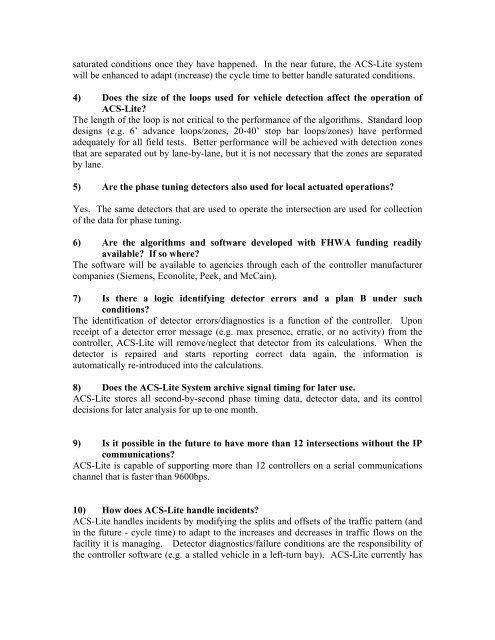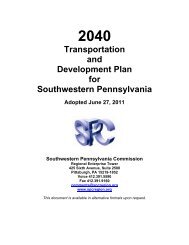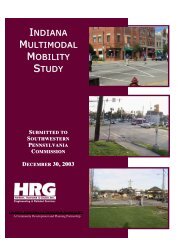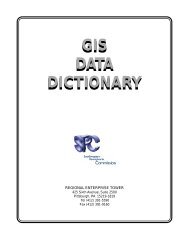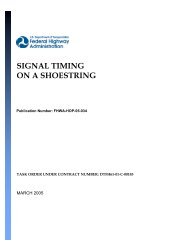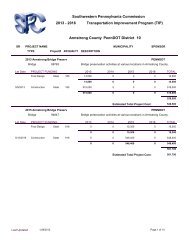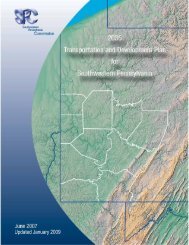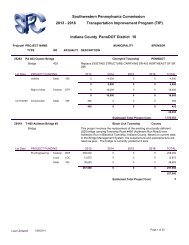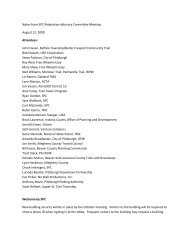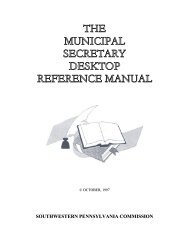Adaptive Control Software – Lite (ACS-Lite) Implementation Template
Adaptive Control Software – Lite (ACS-Lite) Implementation Template
Adaptive Control Software – Lite (ACS-Lite) Implementation Template
You also want an ePaper? Increase the reach of your titles
YUMPU automatically turns print PDFs into web optimized ePapers that Google loves.
saturated conditions once they have happened. In the near future, the <strong>ACS</strong>-<strong>Lite</strong> system<br />
will be enhanced to adapt (increase) the cycle time to better handle saturated conditions.<br />
4) Does the size of the loops used for vehicle detection affect the operation of<br />
<strong>ACS</strong>-<strong>Lite</strong>?<br />
The length of the loop is not critical to the performance of the algorithms. Standard loop<br />
designs (e.g. 6’ advance loops/zones, 20-40’ stop bar loops/zones) have performed<br />
adequately for all field tests. Better performance will be achieved with detection zones<br />
that are separated out by lane-by-lane, but it is not necessary that the zones are separated<br />
by lane.<br />
5) Are the phase tuning detectors also used for local actuated operations?<br />
Yes. The same detectors that are used to operate the intersection are used for collection<br />
of the data for phase tuning.<br />
6) Are the algorithms and software developed with FHWA funding readily<br />
available? If so where?<br />
The software will be available to agencies through each of the controller manufacturer<br />
companies (Siemens, Econolite, Peek, and McCain).<br />
7) Is there a logic identifying detector errors and a plan B under such<br />
conditions?<br />
The identification of detector errors/diagnostics is a function of the controller. Upon<br />
receipt of a detector error message (e.g. max presence, erratic, or no activity) from the<br />
controller, <strong>ACS</strong>-<strong>Lite</strong> will remove/neglect that detector from its calculations. When the<br />
detector is repaired and starts reporting correct data again, the information is<br />
automatically re-introduced into the calculations.<br />
8) Does the <strong>ACS</strong>-<strong>Lite</strong> System archive signal timing for later use.<br />
<strong>ACS</strong>-<strong>Lite</strong> stores all second-by-second phase timing data, detector data, and its control<br />
decisions for later analysis for up to one month.<br />
9) Is it possible in the future to have more than 12 intersections without the IP<br />
communications?<br />
<strong>ACS</strong>-<strong>Lite</strong> is capable of supporting more than 12 controllers on a serial communications<br />
channel that is faster than 9600bps.<br />
10) How does <strong>ACS</strong>-<strong>Lite</strong> handle incidents?<br />
<strong>ACS</strong>-<strong>Lite</strong> handles incidents by modifying the splits and offsets of the traffic pattern (and<br />
in the future - cycle time) to adapt to the increases and decreases in traffic flows on the<br />
facility it is managing. Detector diagnostics/failure conditions are the responsibility of<br />
the controller software (e.g. a stalled vehicle in a left-turn bay). <strong>ACS</strong>-<strong>Lite</strong> currently has


